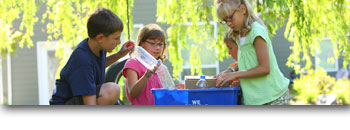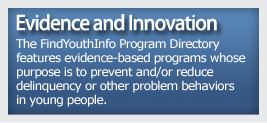Integration into Curriculum and Policies
According to the National Study of the Prevalence of Community Service and
Service-Learning in K-12 Public Schools, for schools that have service-learning, 39 percent include service-learning in the board-approved curriculum for at least one subject in one grade level (Spring et al, 2009).
School principals in schools that implement service-learning reported that service-learning was most likely to take place in social studies, science, and English/language arts (Spring, Grim, & Dietz, 2009):
- 52 percent of principals reported that service-learning was included in core curriculum for social studies.
- 42 percent of principals reported that service-learning was included in core curriculum for science.
- 34 percent of principals reported that service-learning was included in core curriculum for English/language arts.
View examples of service-learning projects in these disciplines.
While less frequent, principals also reported that service-learning was incorporated into
- art, music, and theater;
- career education;
- mathematics;
- health;
- special education;
- gifted/talented education;
- physical education; and
- foreign languages.
District policies that support service-learning can legitimize the practice of service-learning as a key component of education. These policies can also provide resources, professional development, and guidelines for service-learning programs. As such, they can ensure successful implementation and sustainability of school-based service-learning programs. Research shows that schools where there is a district policy in place are much more likely to participate in service-learning (51 percent) than schools where the district does not have a policy (17 percent) or where the policy is unknown (21 percent) (Spring et al., 2009).
The majority of schools implementing service-learning integrate it into at least one aspect of school policies (Spring et al, 2009). Such policies may include one or more of the following:
- Integrating service-learning as a part of the board-approved course curriculum for at least one subject area in at least one grade level.
- Recognition of service-learning in the school improvement plan.
- Inclusion of service-learning in teacher and staff orientation.
Consideration of service-learning as a criterion for teacher and staff evaluation.
Spring, K., Grimm, R., & Dietz, N. (2009). Community service and service-learning in
America’s schools, 2008. Washington, DC: Corporation for National and Community Service, Office of Research and Policy Development. Retrieved from http://www.nationalservice.gov/pdf/08_1112_lsa_prevalence.pdf
Resources
Service-Learning Ideas and Curricular Examples (SLICE)
SLICE is an easy-to-search database full of hundreds of high-quality service-learning lesson plans, syllabi, and project ideas housed on Learn and Serve America’s National Service-Learning Clearinghouse. Lesson plans are submitted by educators and service-learning practitioners.
Collaboration Profiles
Youth Voices
Feature Articles
Tools & Guides
Technical Assistance
Websites
Departments


Announcements
Youth Topics
Collaboration Profiles
Briefs
Youth Voices
Feature Articles

Map My Community is a tool designed specifically to assist you in locating resources in your community to help you build and strengthen your youth program. Get ideas for new partnerships, identify gaps in your community, and learn about resources to avoid duplication of effort.



















